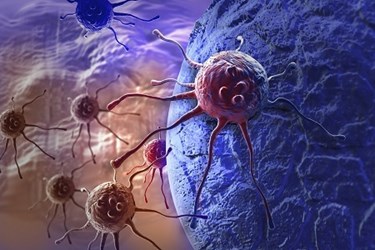Warning: Cancer Immunotherapy Information

By Wayne Koberstein, Executive Editor, Life Science Leader
Follow Me On Twitter @WayneKoberstein

From The Cutting Room Floor: September 2015 Issue
Read the full magazine article: Combination Cancer Immunotherapy: A 2015 Update
If you can say that you completely understand how immunotherapy works in cancer, please feel free to skip this small primer. But for the vast crowd that constitutes the rest of us, we include this basic explanation. The simplest definition of a checkpoint is a regulator of Tregs, immune cells that inhibit activation of T cells to attack tumors. By upregulating Tregs, checkpoints keep T cells inactive and unable to recognize and attack foreign, infected, damaged, or cancerous cells in the body. This is all normal and necessary regulation of the immune system, but cancer can hijack the checkpoint function. At earlier stages, most tumors look foreign to the immune cells, which is why the immune system wipes out nearly all cancers before we notice them. But at later stages, tumors effectively gain the ability to disguise themselves, to express antigens that turn on checkpoints that keep the T cells inactive. For example, when a tumor promotes expression of the checkpoint CTLA-4, more Tregs arise to suppress T cell-versus-tumor activation, effectively hiding the tumor from recognition by the immune sytem. Anti-CTLA-4 therapy interferes with that T cell suppression by blocking the checkpoint, thus the immune cells remain able to recognize and attack the tumor. This is checkpoint blockade at its simplest. About two dozen other checkpoints have been identified to date, each one affecting a different part of or step in our immune response to cancer.
We now pause for some important hair-splitting:
Although PD-1 and its ligand PD-L1 are commonly referred to as checkpoints these days, it is more accurate to describe them as complicated pathways. Indeed, like CTLA-4, PD-1 is expressed on CD+ (cytotoxic) T cells and other immune cells, and PD-L1 is expressed on some tumor cells in some tumors. It is likely that if PD-1 on a T cell binds to PD-L1 on a tumor cell, the T cell does not engage further with the tumor cell and kill it. But the receptors on T cells, including PD-1, are very complex, and very interactive. When one is stimulated, others change their expression. When a PD-1 blocking agent binds to PD-1 on activated CD8+ T cells, there is a major change in the expression of other receptors, particularly the co-stimulators such as OX40. Thus, anti-PD-1 is not a pure “checkpoint inhibitor.” There is no solid evidence that PD-1 blockade suppresses Tregs, but it does have at least two distinct mechanisms of action — preventing T cell anergy, or inactivation, within a tumor, and enabling co-stimulation and proliferation of CD8+ T cells — and having multiple MOAs may well account for its superior performance over anti-CTLA-4 or any other simple checkpoint inhibition therapy.
